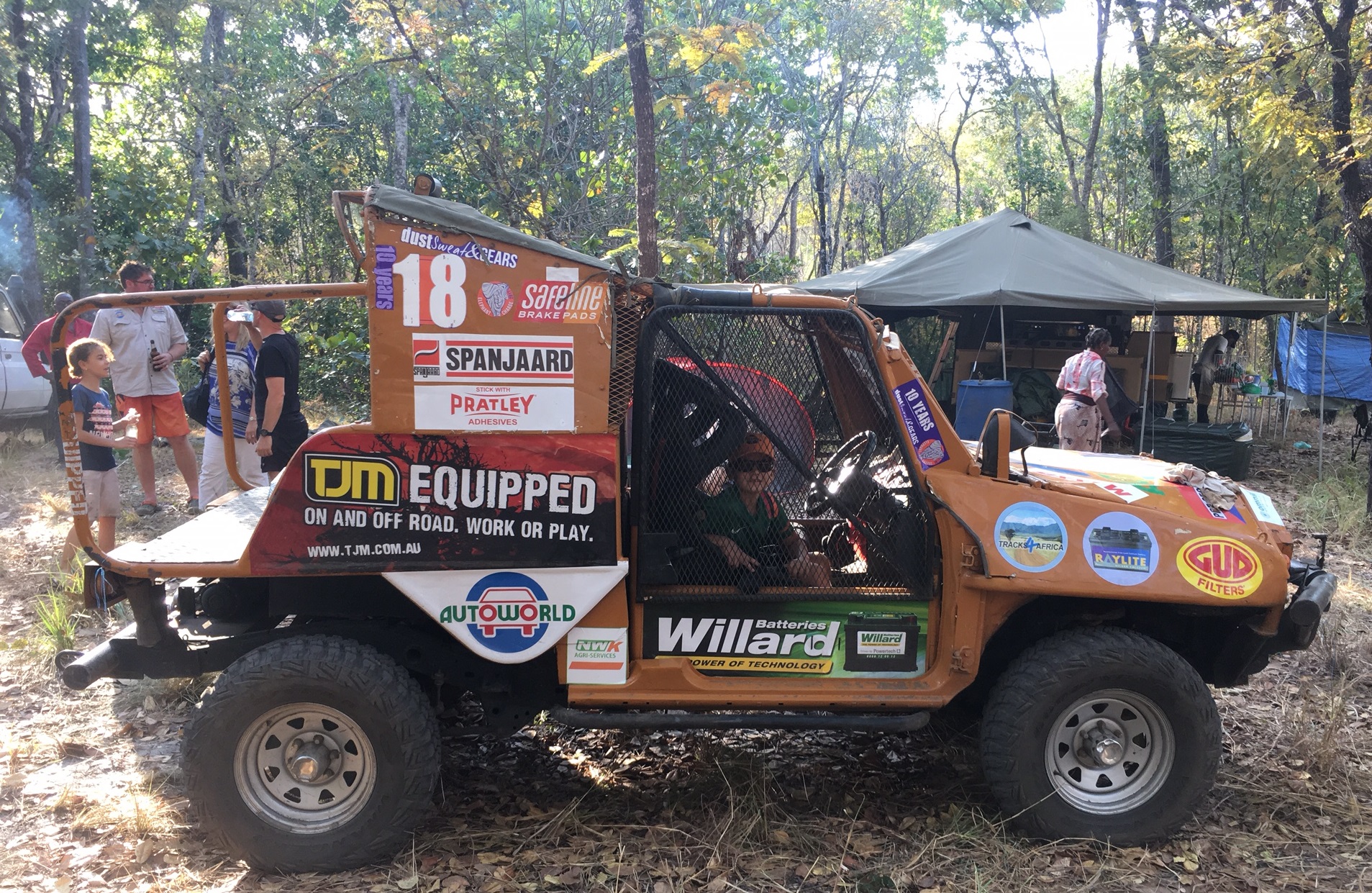All about the Elephant Charge
The Elephant Charge is an extreme 4x4 event held annually, at a different location each year. It challenges teams of cars and motorbikes to complete a gruelling course through the Zambian bush. It raises considerable sums of money for conservation in Zambia, focussing on conservation through education. In the ten years since it began, the event has raised over $640,000 supporting 17 conservation organisations and projects. This has been distributed to conservation organisations working across the country.
On the day of the Charge, the winning team is the one that completes a course of ten checkpoints in the shortest distance possible within the allowed 8 hours. Given a map and with skill and determination, each team must find their own route between the checkpoints through valleys, over ridges, across rivers and up escarpments in a trial of driving, navigating and endurance.
A carefully guarded secret
The exact location of the Elephant Charge is a carefully guarded secret until the day before the competition when directions to the charge site are released. It’s only then that the Teams are told where to meet for sign-in and vehicle scrutineering, and receive directions to their camp sites.
Maps are issued to the teams on the evening before the race. The maps show the location and GPS coordinates of each of the ten checkpoints. Each team is also given - by random draw - a starting checkpoint. The Teams then frantically study their maps and pick their intended route, aiming for the shortest possible distance across the course while avoiding the chasms and peaks, and their own shortcomings. During the race, the teams must visit each of the ten checkpoints before returning to their starting checkpoint. Each team can visit the checkpoints in any order and in any direction they like.
The objective of the race
The Elephant Charge is about covering the terrain in the shortest possible distance and there are no prizes for speed. However, the race does have a time limit and, to be considered for the honours, each team must return to their starting checkpoint by 3pm on the day, having completed the course.
There are bush roads cut to each of the checkpoints and these are marked on the competitors maps. These roads never give the shortest distance but teams can use them if they are running short of time or are having trouble convincing their vehicle to carry on!
The Gauntlet and Tsetse Lines
Three of the checkpoints on the course are designated as the Gauntlet. These checkpoints are close together and include some extreme terrain. The Gauntlet allows the spectators to get close to the action and the teams to show off their abilities.
When the final results are calculated, each team's distance through the Gauntlet checkpoints is multiplied by three. This means it is especially important that teams aim for the shortest distance possible through the Gauntlet as it has a greater impact on their overall result.
There are two Tsetse Lines on the course which teams can decide to attempt. Each Tsetse Line is between two checkpoints where the shortest distance would be extremely challenging. There is a special prize for the shortest distance achieved on each Tsetse Line.



























